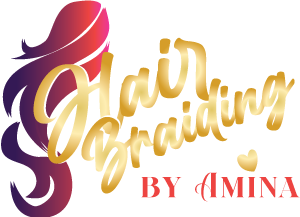In the rich tapestry of African hair braiding, canerows, or cornrows, stand as a testament to the enduring beauty of cultural heritage. Originating from ancient Nubia, canerows have evolved into a versatile and revered form of self-expression. In this exploration, we’ll uncover the deep roots and modern adaptations of canerows, celebrating their status as both a traditional art form and a contemporary fashion statement.
1. Origins and Cultural Significance
Canerows boast a heritage that spans centuries, with roots firmly embedded in the cultural practices of the Nubian people. Historically, the intricate patterns of canerows were not merely aesthetic; they conveyed social status, age, and even religious affiliations within the community. Understanding the cultural significance adds a profound layer of appreciation to this timeless braiding technique.
2. Evolution of Canerows: From Tradition to Trend
While deeply rooted in tradition, canerows have seamlessly transitioned into the realm of modern fashion. Today, individuals from diverse backgrounds embrace canerows as a stylish and versatile option. Celebrities and influencers have played a significant role in popularizing this braiding style, showcasing its adaptability and ability to complement various fashion trends.
3. Canerow Techniques: Precision and Artistry
Creating perfect canerows requires skillful hands and an eye for detail. Braiders meticulously section the hair, weaving it close to the scalp in neat, parallel rows. The possibilities for intricate patterns and designs are endless, making canerows a canvas for creative expression. Each canerow is a work of art, reflecting both the braider’s expertise and the individuality of the person wearing them.
4. Canerows Across Cultures
While canerows have African origins, they have transcended cultural boundaries. Embraced globally, this braiding style has become a symbol of unity and shared appreciation for beauty. Canerows are no longer confined by geography; they are a testament to the interconnectedness of cultures and the celebration of diversity.
5. Canerows as a Form of Empowerment
Beyond aesthetics, canerows have become a powerful symbol of empowerment. The act of choosing canerows is a conscious decision to embrace one’s roots, celebrate cultural identity, and challenge societal norms of beauty. This reclaiming of identity through canerows represents a form of self-empowerment and a celebration of natural beauty.
Conclusion: A Living Legacy
Canerows are more than just a hairstyle—they are a living legacy that bridges the past and the present. From their ancient origins in Nubia to their current status as a global fashion statement, canerows continue to weave tales of tradition, artistry, and empowerment. As we celebrate the beauty of canerows, we honor not only the skill of the braider but also the resilience and enduring allure of this timeless braiding technique.

